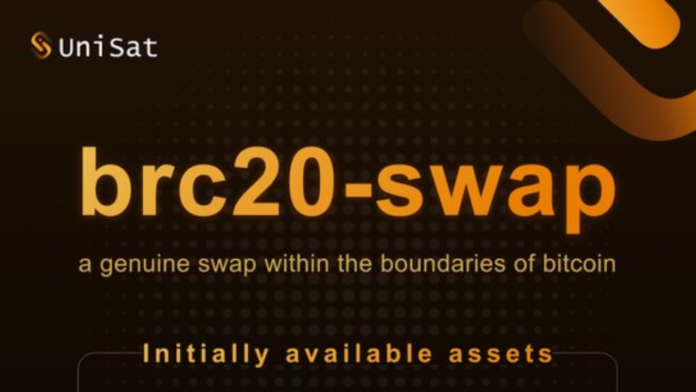BRC20-Swap, UniSat’s newly launched service, aims to add value to the BRC20 ecosystem but is not without its quirks. Set to operate initially in what UniSat calls a “black module state,” the platform will impose some unique restrictions on withdrawal capabilities.
For those uninitiated, a “black module state” is a phase where the system undergoes rigorous real-world testing before it’s declared fully stable. During this phase, an interesting rule comes into play: withdrawals for any given asset like ‘ordi’ can only occur if there are new deposits for that asset. This essentially means that if a particular asset isn’t receiving enough deposits, users who wish to withdraw it could face delays, potentially affecting the overall user experience.
After extensive research, UniSat has made a decision to initially support only a limited list of assets. This strategy aims to improve the withdrawal experience, which, given the limitations of the black module state, could otherwise be quite patchy.
So, what’s the criterion for an asset to find a place on this exclusive list? Well, the asset must have seen at least 15 days of trading activity on UniSat’s Marketplace in the past month. That’s right; new kids on the block that have been deployed within the last 14 days don’t get an invite to this party. Nor do assets that haven’t been pulling their weight, signified by having zero trading volume for more than half of the past 30 days.
By adhering to this rule, UniSat has shortlisted 14 assets to support at the launch of BRC20-Swap. The list comprises a mix of familiar and perhaps some less-known digital assets, including ‘SATs,’ ‘Ordi,’ ‘Trac,’ ‘Oshi,’ ‘BTCS,’ ‘OXBT,’ ‘Texo,’ ‘CNCL,’ ‘Meme,’ ‘Honk,’ ‘ZBIT,’ ‘VMPX,’ ‘PEPE,’ and ‘MXRC.’ By focusing on these assets, the company hopes to significantly enhance the user withdrawal experience during the black module phase.
UniSat seems optimistic that the platform will stabilise in the near future and transition to what’s termed a “white module state.” In this phase, the company plans to lift all restrictions, allowing for the trading of any asset and enabling complete and unrestricted withdrawals. The strategy looks promising but is contingent on how well the system can adapt and evolve.
One can’t help but wonder, however, if the initial restrictions might deter some users or potential investors who seek more freedom and flexibility from their trading platforms. While UniSat’s cautious approach is understandable, the limitations do raise questions about how appealing the platform will be in its early stages.
All said and done, brc20-swap’s launch is an ambitious move by UniSat. It’s an experiment that will undoubtedly teach us a lot about the mechanics of crypto trading platforms, the importance of liquidity, and the challenges of balancing user experience with system stability. Whether it will be a smooth ride or a bumpy one, only time will tell.
For those intrigued and want to dig deeper, UniSat has provided more details on BRC20 modules, withdrawals, centralisation issues and more on their official link.


